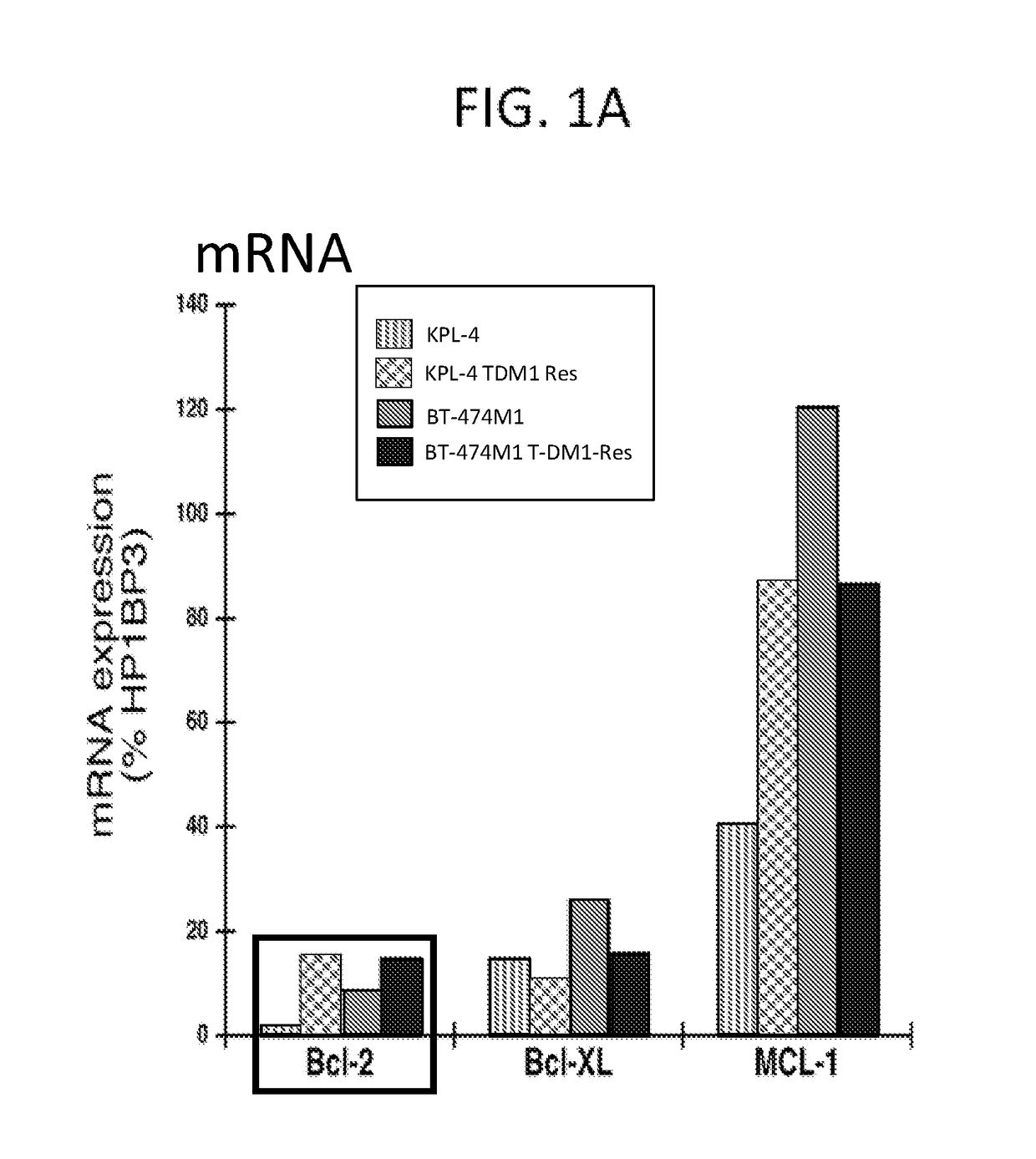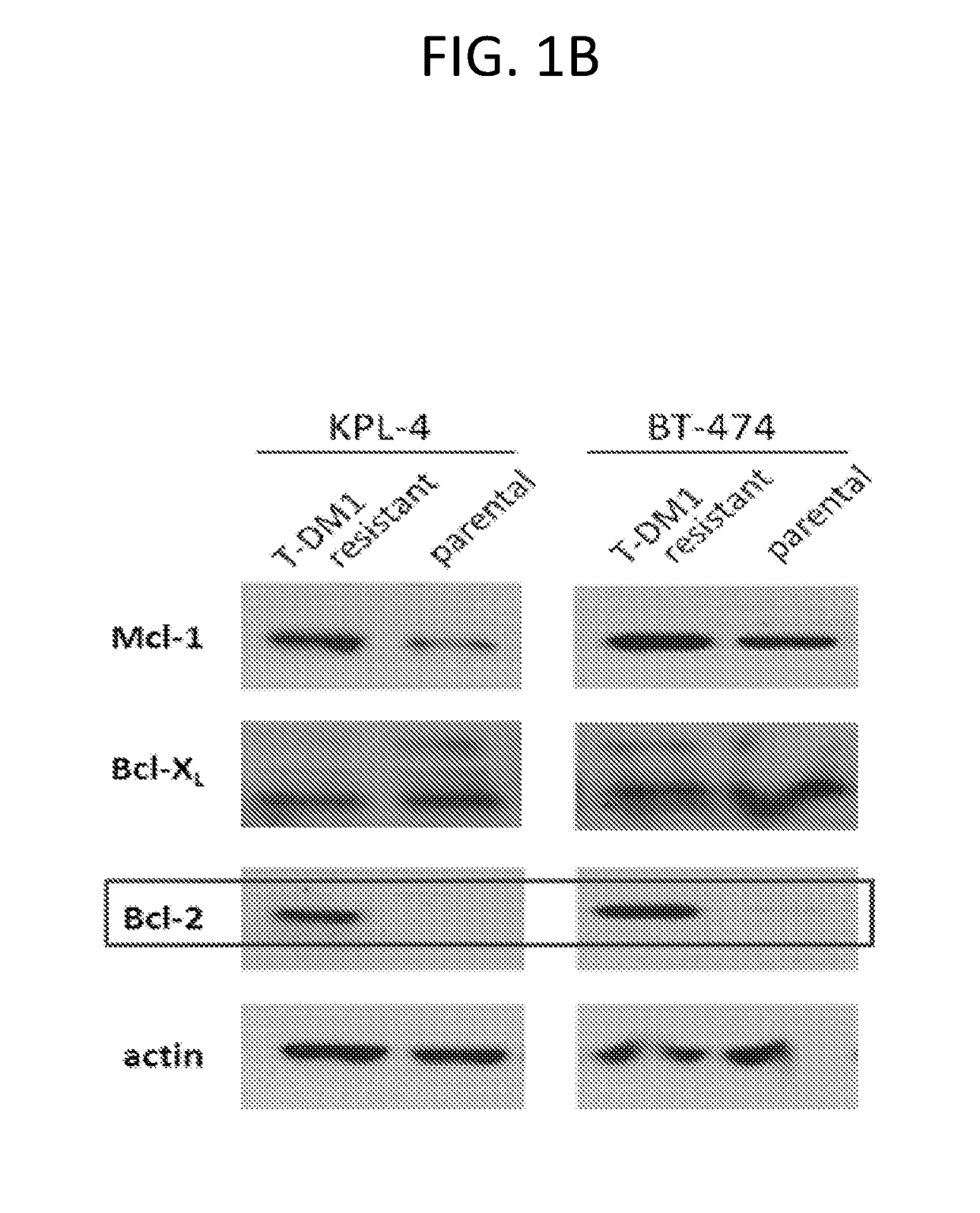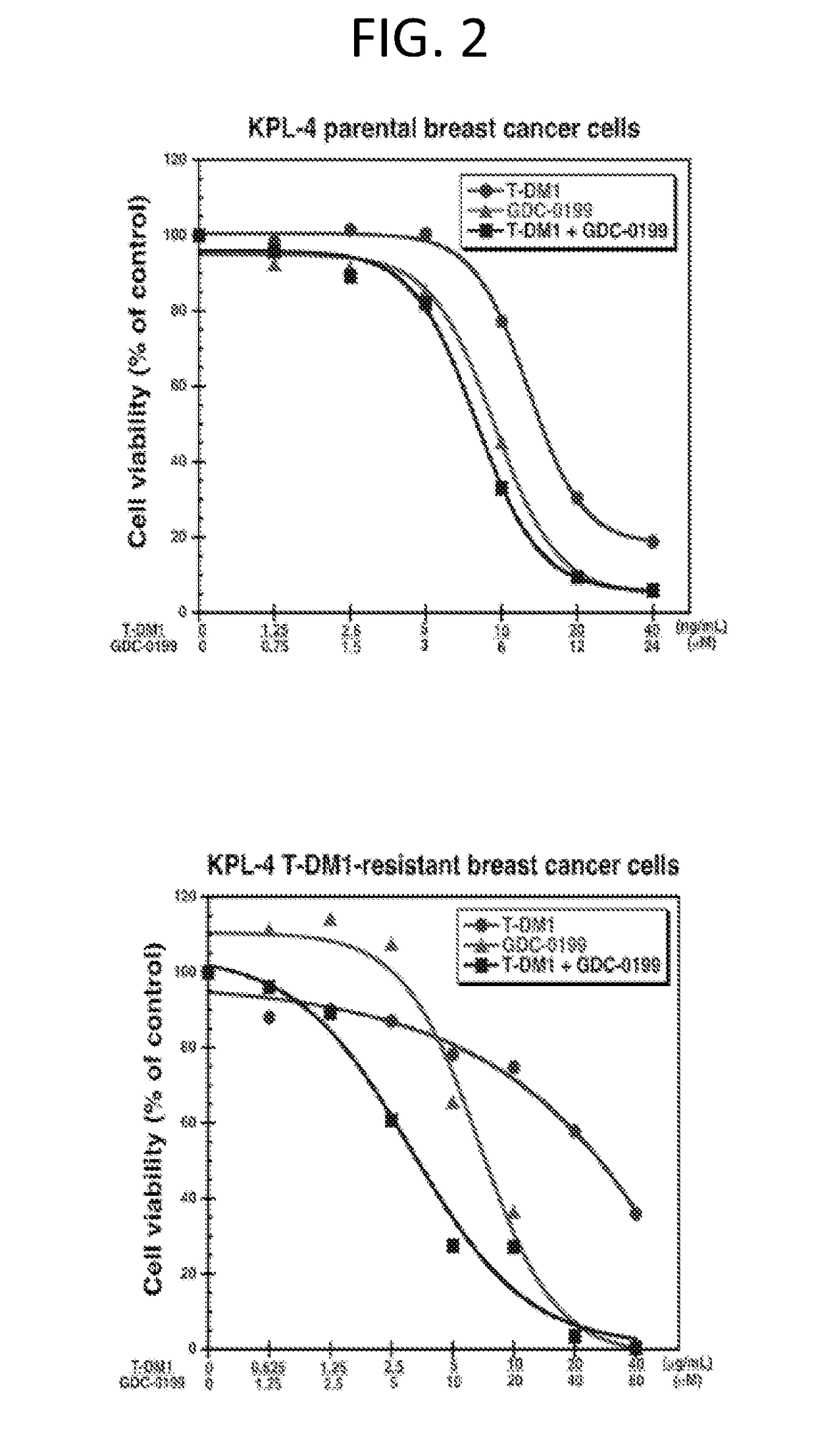Combination therapy with an Anti-her2 antibody-drug conjugate and a bcl-2 inhibitor
a technology of conjugate and antibody, which is applied in the field of conjugate therapy involving an anti-her2 antibodydrug conjugate and a bcl-2 inhibitor, can solve the problems of reducing the clinical effect of maytansine and abandoning the further development of the drug
- Summary
- Abstract
- Description
- Claims
- Application Information
AI Technical Summary
Benefits of technology
Problems solved by technology
Method used
Image
Examples
example 1
[0219]Expression of Bcl-2 Family Pro-Survival Molecules in T-DM1-Resistant Breast Cancer Cells
[0220]Preparation of T-DM1 Resistant Cell Lines
[0221]Initally, KPL-4 and BT-474M1 cells were made resistant to T-DM1 by continuous culture in the presence of T-DM1, starting at a very low concentration of 10 ng / mL, which was gradually increased to 2 μg / mL. The cells derived are the “resistant pools” which were maintained in culture in 2 μg / mL T-DM1. To derive stably resistant clones, each pool (KPL-4 and BT-474M1) was subjected to single cell sorting and cloning. Clones were maintained without T-DM1 such that clones that had stable resistance in the absence of T-DM1 could be identified.
[0222]TaqMan analysis
[0223]Total RNA was prepared using Qiagen RNeasy Mini kit. Genomic DNA was removed by DNase I. Gene expression was quantified using real time quantitative PCR (qPCR or TaqMan). TaqMan One-Step Universal Master Mix (Applied Biosystems) was used for all reactions. The reaction was performed...
example 2
[0226]Cell Proliferation Assay—Parental and T-DM1-Resistant KPL-4 Breast Cancer Cell Lines
[0227]The cell proliferation assay was performed for 3 days using Cell-Titer Glo reagent. KPL-4 parental breast cancer cells and KPL-4 T-DM1-resistant breast cancer cells, prepared as described in Example 1, were treated with T-DM1, GDC-0199 or a combination of T-DM1 and GDC-0199 at fixed ratios. Synergy was analyzed using the Chou and Talalay Drug Combination Dose-Effect Analysis with CalcuSyn software in order to obtain a Combination Index “CI” (Chou and Talalay (1984) Adv. Enzyme Regul. 22:27-55). CI values of less than 1 indicate synergy, while CI=1 indicated additivity.
[0228]Assay Conditions:
[0229]Cells were maintained in Ham's F-12: high glucose DMEM (1:1) supplemented with 10% heat-inactivated fetal bovine serum and 2 mM L-glutamine. Cells were plated in 96-well plates (4000 cells per well for KPL-4 parental cells; 8000 cells per well for KPL-4 T-DM1 resistant cells) and allowed to adher...
example 3
[0230]Caspase 3 / 7 Activation Luminescence Assay—Parental and T-DM1-Resistant KPL-4 Breast Cancer Cell Lines
[0231]As noted before, the Bcl-2 family of proteins regulates programmed cell death triggered by developmental cues and in response to multiple stress signals. When activated, they can permeabilize the outer membrane of mitochondria and release pro-apoptogenic factors (e.g. cytochrome C) needed to activate the caspases that dismantle the cell (Wang, K., Genes and Development 15 (2001) 2922-2933; (Adams, 2003 supra); Green, D. R., and Kroemer, G., Science 305 (2004) 626-629). Thus, activation of caspases, such as caspases 3 and 7, indicates induction of apoptosis.
[0232]In the present experiment, caspase 3 / 7 activation luminescence assay was performed using the Caspase-Glo® reagent (Promega) essentially following manufacturer's instructions. Assays were performed in the same manner as the viability assays except that drug incubation times were 24 hours and Caspase-Glo 3 / 7 (Promeg...
PUM
| Property | Measurement | Unit |
|---|---|---|
| Composition | aaaaa | aaaaa |
| Electrical resistance | aaaaa | aaaaa |
| Ratio | aaaaa | aaaaa |
Abstract
Description
Claims
Application Information
 Login to View More
Login to View More - R&D
- Intellectual Property
- Life Sciences
- Materials
- Tech Scout
- Unparalleled Data Quality
- Higher Quality Content
- 60% Fewer Hallucinations
Browse by: Latest US Patents, China's latest patents, Technical Efficacy Thesaurus, Application Domain, Technology Topic, Popular Technical Reports.
© 2025 PatSnap. All rights reserved.Legal|Privacy policy|Modern Slavery Act Transparency Statement|Sitemap|About US| Contact US: help@patsnap.com



